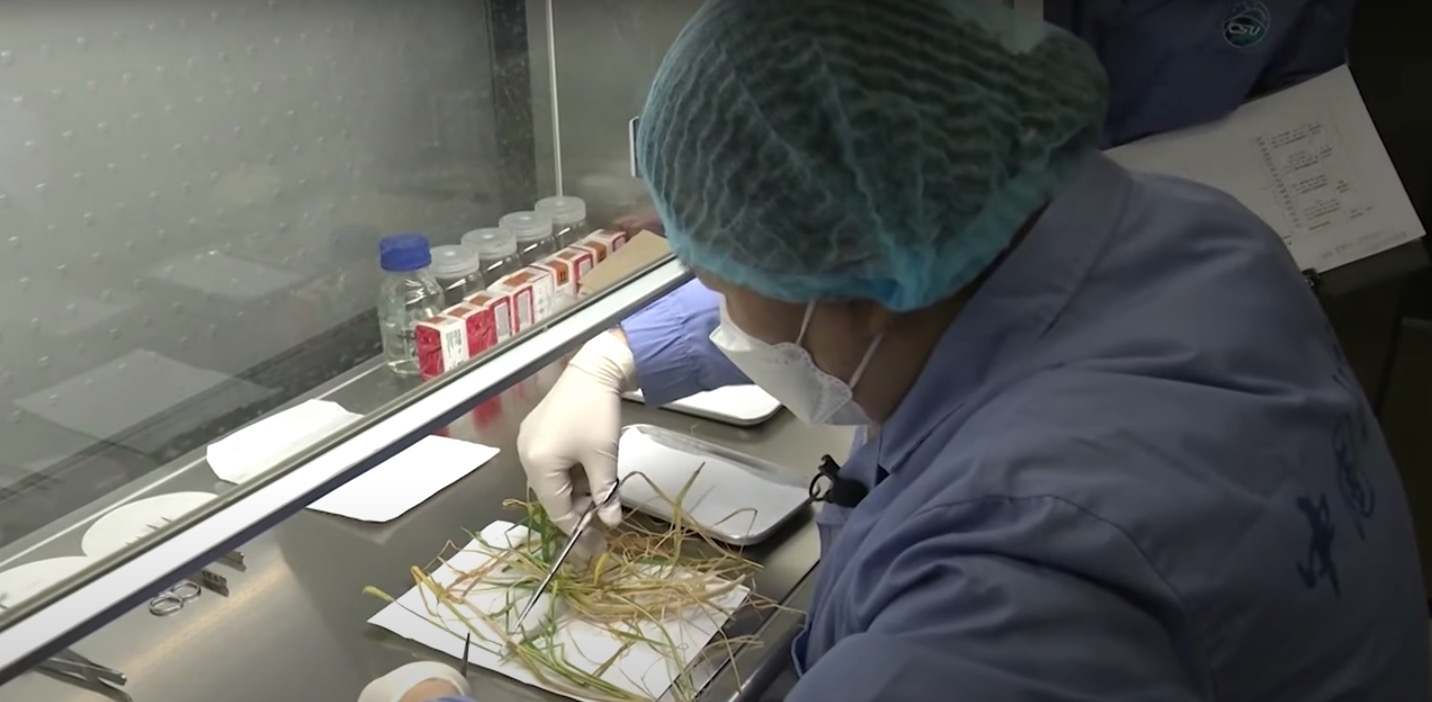Space-grown plants brought home by China's Shenzhou 14 mission undergo analysis (video)
China wants to learn if and how crops can be grown in space to support crewed missions.
Chinese scientists are analyzing rice, Thale cress and other plants after the country's Shenzhou 14 astronaut crew cultivated samples in space and brought them back to Earth.
The samples were grown in microgravity aboard China's Tiangong space station by the Shenzhou 14 astronauts, who returned to Earth on Sunday (Dec. 4).
The astronauts cultivated rice and Thale cress seeds for 120 days, taking the seeds through the entire life cycle, from germination to reproduction.
Related: China's Shenzhou 14 astronauts snap stunning photos of Earth, the moon and more

These have now been delivered to the Chinese Academy of Sciences (CAS) for testing, which includes looking at how the plants grew differently in microgravity compared with control samples here on Earth.
Zheng Huiqiong, a researcher at the Center for Excellence in Molecular Plant Science under CAS, told Chinese broadcaster CCTV that growing the plants was a challenge for the astronauts.
"The space is very limited, and the whole environment is artificial. It is very difficult to complete the entire life cycle of the crop in an artificial environment. The biggest difficulty is to ensure that the plant makes it through every growth stage, and can grow normally," Zheng said.
Get the Space.com Newsletter
Breaking space news, the latest updates on rocket launches, skywatching events and more!
China has experimented with rice and other plants in space for more than 30 years, by sending seeds into orbit for brief trips during which they are exposed to the higher radiation environment of low Earth orbit. After this process of "space mutagenesis," teams then look for rice with genetic mutations that enhance their yield or resistance to disease.
This time however, by looking at the entire life cycle of rice, scientists are more interested in learning about the potential of growing vegetables and food production for deep space travel.
While the U.S. and partners are working on the Artemis program, China likewise has its own plan for an International Lunar Research Station.
Follow us on Twitter @Spacedotcom and on Facebook.
Join our Space Forums to keep talking space on the latest missions, night sky and more! And if you have a news tip, correction or comment, let us know at: community@space.com.

Andrew is a freelance space journalist with a focus on reporting on China's rapidly growing space sector. He began writing for Space.com in 2019 and writes for SpaceNews, IEEE Spectrum, National Geographic, Sky & Telescope, New Scientist and others. Andrew first caught the space bug when, as a youngster, he saw Voyager images of other worlds in our solar system for the first time. Away from space, Andrew enjoys trail running in the forests of Finland. You can follow him on Twitter @AJ_FI.









